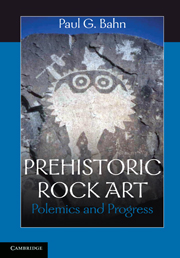Book contents
- Frontmatter
- Contents
- Figures
- Foreword by H. C. Woodhouse
- Acknowledgements
- Introduction
- 1 Art on the rocks
- 2 Myths and meanings
- 3 The emperor's new clothes I: sloppy tailoring
- 4 The emperor's new clothes II: fashion disasters
- 5 Location, location, location
- 6 The votive motive
- 7 Mustn't crumble
- Conclusion
- Select bibliography
- Index
3 - The emperor's new clothes I: sloppy tailoring
Published online by Cambridge University Press: 05 June 2012
- Frontmatter
- Contents
- Figures
- Foreword by H. C. Woodhouse
- Acknowledgements
- Introduction
- 1 Art on the rocks
- 2 Myths and meanings
- 3 The emperor's new clothes I: sloppy tailoring
- 4 The emperor's new clothes II: fashion disasters
- 5 Location, location, location
- 6 The votive motive
- 7 Mustn't crumble
- Conclusion
- Select bibliography
- Index
Summary
Never was there a dogma more calculated to foster indolence, and to blunt the keen edge of curiosity.…The student, instead of being…prompted to undertake laborious inquiries…was taught to despond from the first.
Charles Lyell, 1830–33. Principles of Geology. Volume 3, chapter 1, pp. 2–3.Because only the original artists can tell us what they were depicting and explain the meaning(s) of their images, it is inevitable that many different interpretations have been applied to this mute evidence, but, on the whole, these readings tell one far more about the interpreters than about the artists or their art! The earliest known stories about the art's makers concern giants, devils, and saints (Chapter 1). Some better-grounded interpretations, such as ‘hunting magic’ or ‘fertility magic’, have been around for a long time, and seem to be applicable in some circumstances. Others, like the ‘Martians’ of the Sahara, or extraterrestrials being responsible for giant statues or geoglyphs, are not taken seriously by most people.
In recent decades, however, some specialists rejected literal or mythological interpretations, and instead insisted that virtually all rock art, from all cultures and all parts of the world, is no more than ‘shamanic’ imagery, recording the visions seen in trance by shamans. This notion was fatally flawed, being based on erroneous or distorted data, and was not even applicable in Siberia, the heartland of true shamanism! The proponents were so eloquent and persuasive that many people have come to believe that there is some substance to the idea, and few have dared to point out its severe shortcomings.
- Type
- Chapter
- Information
- Prehistoric Rock ArtPolemics and Progress, pp. 67 - 93Publisher: Cambridge University PressPrint publication year: 2010



